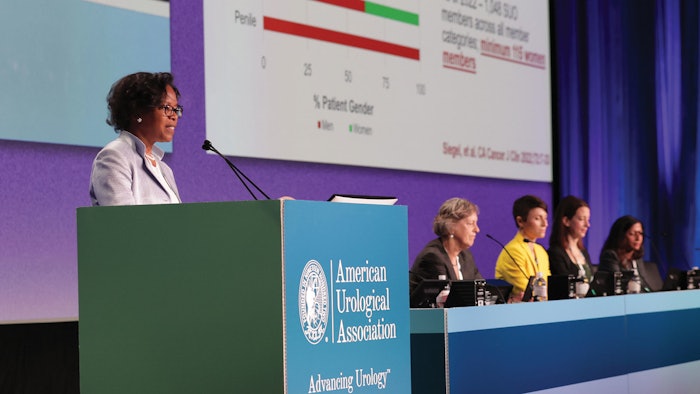Lead the change to increase diversity in urologic oncology
As recently as 1990, there were only a handful of women urologists who specialized in oncology.

As recently as 1990, there were only a handful of women urologists who specialized in oncology. In 2022, there are now 91 female members in the Society of Urologic Oncology (SUO). The AUA has a strong focus on diversity and inclusion, and progress is ongoing. However, more work needs to be done to increase the number female urologic oncology specialists.
“Increasing the number of women in the specialty will help our specialty and other specialties,” said Eila Skinner, MD, the Thomas A. Stamey Research Professor of Urology at Stanford University School of Medicine in California.
In Friday’s session, “Women in Urologic Oncology: Past, Present and Future,” Dr. Skinner led a panel of recognized female leaders in urologic oncology who discussed how women in the specialty got to where they are today and how to build for the future.
Cheryl Lee, MD, professor and chair of the department of urology at The Ohio State University in Columbus, began by highlighting trailblazers, including Elisabeth Pickett, MD, the first female urologic oncologist, who laid the groundwork for the specialty in 1954.
“The few women in urologic oncology in the beginning were supported by many men through mentorships and sponsorships. Yet, we lacked the critical mass to be able to expand the number of women in the field,” Dr. Lee said. She noted that of the 444,660 patients with genitourinary cancer, which represents 23% of all cases in all sites, 11%, or 49,700, are women. “To better mirror our patient population, the SUO, which has 1,048 members across all member categories, needs a minimum of 115 women members,” Dr. Lee said.
Driving the expansion of women in urologic oncology will promote surgical excellence, advance academic pursuits, build camaraderie and advocate for issues, funding and research related to female patients with urologic cancer. But how does the specialty get there?
Sarah Psutka, MD, MS, associate professor in the department of urology at the University of Washington in Seattle, presented a plan for increasing women in urologic oncology that’s centered on Women in Urologic Oncology (WUO) within the SUO. The WUO can provide the infrastructure to continue building diversity and equity within the SUO, she said. Core principles of the WUO include representation, mentorship, advocacy, allyship and sponsorship of women in urologic oncology while advancing the objectives of the SUO.
“Equity adds value and builds community,” Dr. Psutka said. When underrepresented groups are welcomed, everyone wins.
Kristen Scarpato, MD, MPH, associate professor in the department of urology at Vanderbilt University Medical Center in Nashville, Tennessee, addressed the lack of gender diversity in the urologic oncology workforce. “About 11% of practicing urologists are female and only 4% have an oncology focus,” Dr. Scarpato said. “The pipeline of applicants for urologic oncology is impacted by what the workforce looks like.”
People want to share community with their coworkers and want to work with people who look like them, Dr. Scarpato said. Building awareness, being a good mentor, celebrating workforce diversity and fostering a supportive environment can help fortify the applicant interest.
“We know outcomes in medicine are better when we have a diverse workforce,” she said.
Overall, though, “the future looks bright,” said Sima Porten, MD, associate professor in the department of urology at University of California San Francisco. To build a career as a woman in urologic oncology, Dr. Porten recommended building a network of women and men who can guide and support you. She advocated taking risks, talking to people you may not know, being an ally and an advocate for diversity, and leading the change.
“This can be a small action, such as going to your department and suggesting getting rid of late night and early meetings, which can benefit both men and women with families. It’s a road map to help all of us increase women in urologic oncology and all of urology,” Dr. Porten said.
Tune in to AUA TV to see Dr. Skinner discuss women in urologic oncology in greater detail.